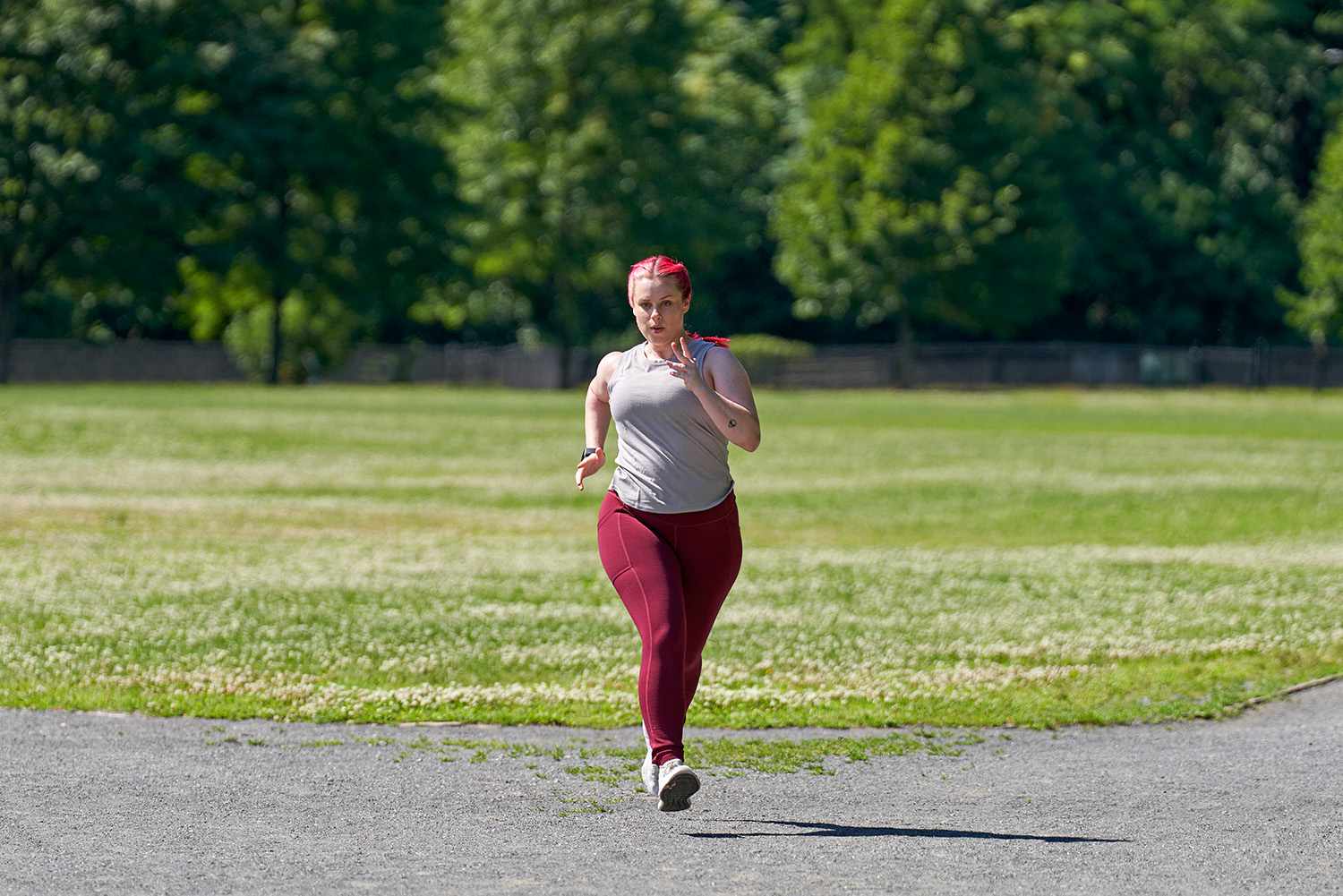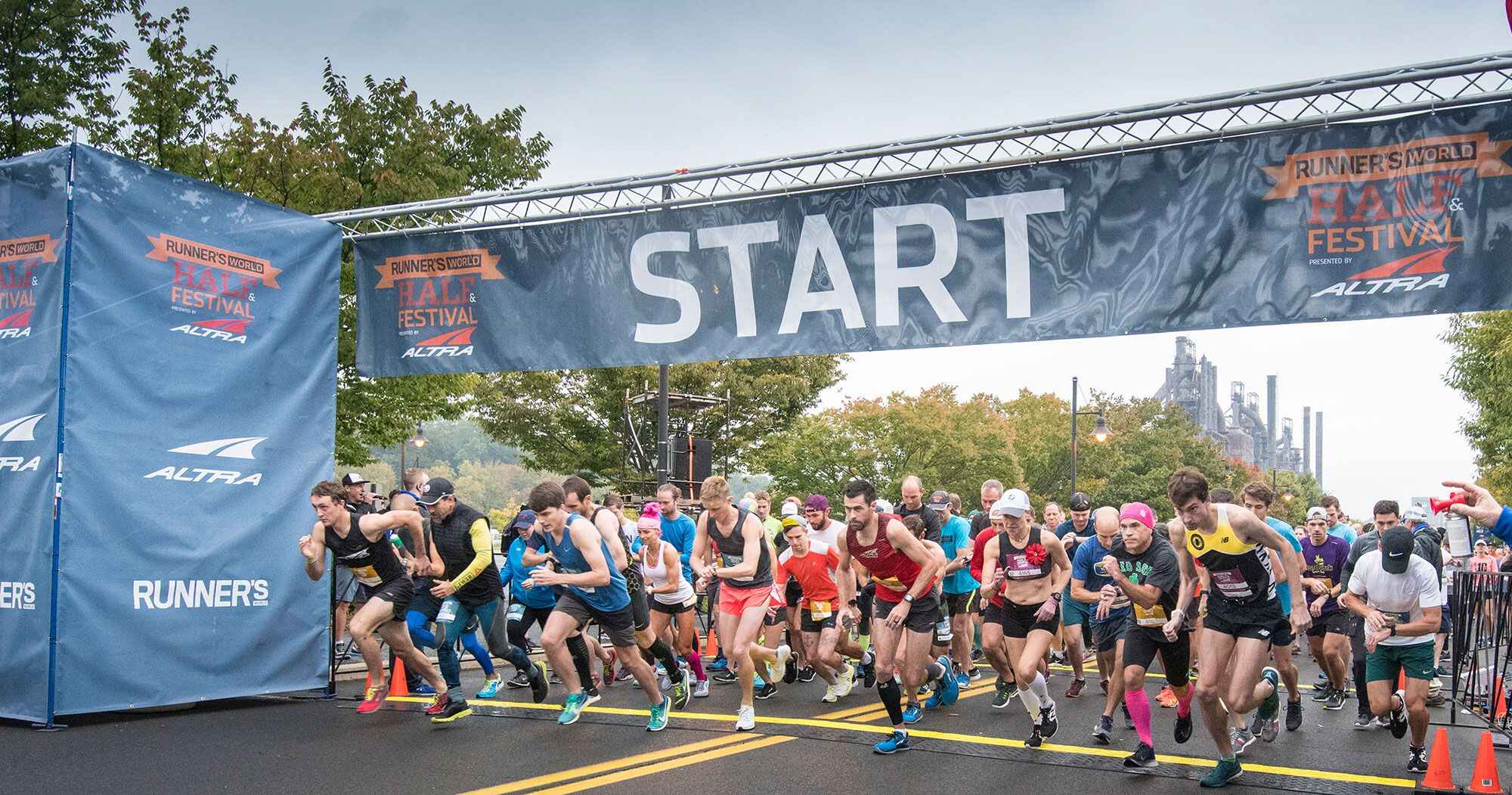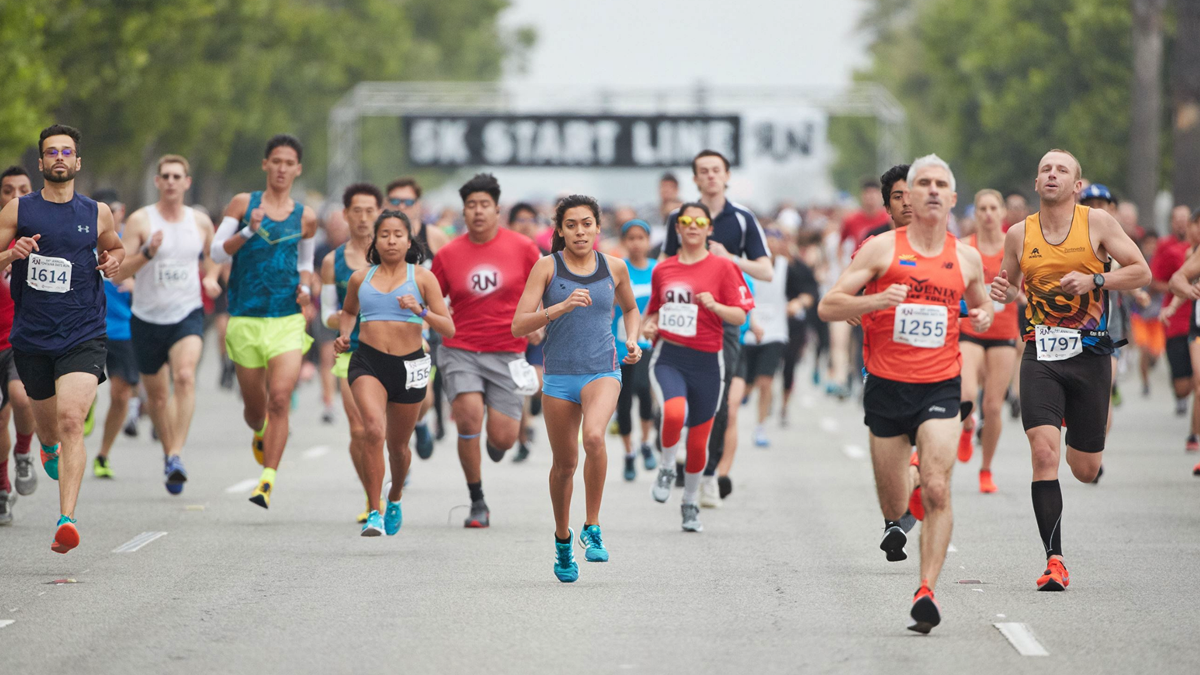

Featured
How To Train For A 5K Marathon
Modified: October 24, 2023
Discover the best training tips and techniques to prepare for your upcoming 5K marathon. Get featured in the top ranks with our expert guidance.
Introduction
Training for a 5K marathon can be an exciting and challenging endeavor. Whether you are a seasoned runner looking to improve your personal record or a beginner taking your first steps into the running world, having a well-structured training plan is essential. But where do you start? How do you prepare your mind and body for the race ahead?
In this article, we will guide you through the process of training for a 5K marathon, from choosing the right training plan to incorporating various speed and endurance workouts. We will also discuss injury prevention, cross-training, and strategies for race day.
But before we delve into the specifics, it’s important to acknowledge that training for a 5K requires time, dedication, and patience. It’s a journey that will challenge you physically, mentally, and emotionally. However, with the right mindset and proper training techniques, you can cross that finish line with a sense of accomplishment and pride.
Remember, the key to successful training is finding a balance between pushing yourself and avoiding overexertion. It’s important to listen to your body, stay consistent, and gradually increase the intensity of your workouts. Whether you have a specific time goal in mind or simply want to enjoy the experience, following a structured training plan will help you reach your desired outcome.
So, let’s lace up those running shoes, grab a water bottle, and embark on this exciting journey together. Our comprehensive guide will provide you with the tools, tips, and techniques you need to train for a 5K marathon and cross that finish line with a smile on your face. Are you ready? Let’s get started!
Choosing the Right Training Plan
When embarking on your journey to train for a 5K marathon, the first step is to choose the right training plan that suits your fitness level and goals. With so many options available, finding the right plan can be overwhelming. Here are some factors to consider when selecting your training plan:
1. Beginner, intermediate, or advanced: Determine your current fitness level and choose a training plan that aligns with it. If you’re new to running or haven’t been active for a while, opt for a beginner plan that gradually builds your endurance. Intermediate plans are suitable for those who can comfortably run 2-3 miles, while advanced plans are geared towards experienced runners who want to improve their performance and times.
2. Time commitment: Assess how much time you can realistically dedicate to your training. Some plans may require 4-5 days of running per week, while others may have shorter, more intense workouts that fit into a busy schedule. Choose a plan that you can stick to consistently without feeling overwhelmed or sacrificing other commitments.
3. Goals: Consider what you want to achieve from your 5K marathon. Are you aiming for a specific time goal, or do you simply want to complete the race? Some plans focus more on speed and performance, while others prioritize building endurance and enjoying the experience. Choose a plan that aligns with your goals and motivates you to stay on track.
4. Flexibility: Look for plans that offer flexibility to accommodate variations in your schedule and personal circumstances. Life can sometimes throw curveballs, and having a plan that allows for modifications will help you stay committed and adjust your training as needed.
5. Gradual progression: It’s important to choose a training plan that incorporates gradual progression. A plan that slowly increases your mileage and intensity will help prevent injuries and improve your overall fitness. Avoid plans that push you too hard, too soon, as this can lead to burnout or setbacks.
Once you have selected a training plan that suits your needs, it’s essential to stick to it as closely as possible. Consistency is key in training for a 5K marathon. However, don’t be afraid to make slight adjustments along the way to accommodate your individual progress and listen to your body’s needs.
By choosing the right training plan, you are setting yourself up for success and ensuring a well-rounded and structured approach to your 5K marathon training. Remember, each runner is unique, so finding the plan that works best for you will play a crucial role in your journey toward crossing that finish line.
Setting Goals for Your Race
Setting goals is an important part of training for a 5K marathon. Goals give you something to strive for and can provide motivation throughout your training journey. Whether you’re aiming to complete your first race or improve your personal record, here are some tips for setting effective goals:
1. Specific and measurable: Your goals should be clear and measurable. For example, instead of saying “I want to run faster,” a more specific goal would be “I want to finish the 5K race in under 25 minutes.” This gives you a target to aim for and allows you to track your progress.
2. Realistic and attainable: While it’s great to challenge yourself, it’s important to set realistic goals that are achievable within your current fitness level and the time frame you have. Setting overly ambitious goals can lead to frustration and may increase the risk of injury. Gradually increasing your goals as you progress in your training is a better approach.
3. Short-term and long-term: Set both short-term and long-term goals. Short-term goals can be milestones you want to reach during your training, such as running a certain distance without stopping or completing a challenging workout. Long-term goals can be the specific time or performance goal you want to achieve on race day.
4. Personal and meaningful: Your goals should be personal to you and align with what motivates and inspires you. Maybe you want to complete the race in honor of someone or prove to yourself that you can accomplish something you never thought possible. Having a meaningful goal will provide the extra push and determination when the going gets tough.
5. Flexible and adjustable: Goals may need to be adjusted along the way as you progress in your training or encounter unexpected challenges. Be open to reassessing your goals and making changes if needed. It’s important to be adaptable and focus on the overall progress you’re making rather than rigidly sticking to initial goals.
Setting goals for your race will give you a sense of purpose and direction throughout your training. They will help you stay motivated, push through the tough days, and celebrate your achievements. Remember, it’s essential to enjoy the process and not solely focus on the outcome. Each step you take and every milestone you reach is a victory in itself.
With well-defined goals, you can set your sights on success and approach your 5K marathon with confidence and determination. So dream big, set your goals, and let the journey towards achieving them begin.
Building Endurance with Long Runs
Building endurance is a crucial aspect of training for a 5K marathon. Long runs play a vital role in increasing both your cardiovascular fitness and mental stamina. Here’s why incorporating long runs into your training routine is essential, along with some tips to maximize their effectiveness:
Long runs are typically performed once a week and should be gradually increased in distance over time. These runs are designed to build your aerobic capacity and improve your body’s ability to sustain a steady pace for an extended duration.
During long runs, your body adapts by increasing its glycogen storage capacity, improving fat utilization for fuel, and developing the muscles required for endurance running. Additionally, long runs offer an opportunity to practice your race day nutrition and hydration strategies.
Here are some tips to make the most of your long runs:
1. Start slow: Begin your long runs at a comfortable pace that allows you to maintain a conversational effort. Gradually increase your pace as your body adapts and the distance becomes more manageable.
2. Hydrate and fuel: Stay hydrated during your long runs by drinking water or sports drinks at regular intervals. Practice consuming energy gels or snacks that you plan to use on race day to avoid any digestive issues.
3. Break it up: If running the entire distance seems daunting, break it up into manageable segments. For example, split a 10-mile run into two 5-mile runs with a short break in between. This can help mentally and make the distance feel more achievable.
4. Gradually increase mileage: Increase your long run distance by no more than 10% each week. This allows your body to adapt and reduces the risk of overuse injuries. Listen to your body and adjust accordingly if you’re feeling excessively fatigued or experiencing pain.
5. Recovery: Give yourself proper recovery time after long runs. This may include a day of rest or a shorter, easy-paced run the day after. Listen to your body’s cues and provide it with the rest it needs to recover and rebuild.
Remember, every runner is different, and what works for one person may not work for another. Experiment with different distances, paces, and strategies to find what works best for you. Consistency and gradual progression are key to building endurance and preparing your body for the 5K marathon.
By incorporating long runs into your training regimen, you are developing the physical and mental resilience needed to conquer the distance. Embrace the journey, set the pace, and gradually build your endurance with each step. Before you know it, you’ll be crossing that finish line with a newfound sense of accomplishment and pride.
Speedwork and Interval Training
Speedwork and interval training are essential components of a well-rounded 5K marathon training plan. These workouts are designed to improve your running economy, increase your speed, and enhance your overall performance. Here’s why incorporating speedwork and interval training into your routine is crucial, along with some tips to optimize your workouts:
Speedwork involves running at a faster pace than your normal training pace. It challenges your cardiovascular system, improves your running form, and enhances your ability to sustain a faster speed for longer durations. Interval training, on the other hand, alternates between high-intensity efforts and active recovery periods.
Here are some reasons why speedwork and interval training are beneficial for your 5K marathon preparation:
1. Increase speed: By incorporating structured speedwork sessions into your training, you can improve your speed and race pace. These workouts help your body adapt to running faster and teach your muscles to recruit more muscle fibers, leading to improved running efficiency.
2. Build mental resilience: Speedwork and interval training push you out of your comfort zone, challenging your mental toughness. As you learn to embrace discomfort and push through fatigue, you’ll develop mental strength that will be invaluable on race day.
3. Elevate anaerobic threshold: Interval training helps improve your anaerobic threshold—the point at which your body switches from using oxygen efficiently to relying on stored glycogen. By increasing your anaerobic threshold, you’ll delay the onset of fatigue and be able to maintain a faster pace for a longer period.
4. Vary workout intensity: Speedwork and interval training introduce intensity variations into your training routine, preventing plateau and keeping your workouts exciting and challenging. This variation can also prevent overuse injuries associated with high-volume, low-intensity training.
Here are some tips to make the most of your speedwork and interval training sessions:
1. Warm-up and cool down: Always start your speedwork sessions with a proper warm-up consisting of dynamic stretches and easy running. Similarly, cool down with a few minutes of jogging and static stretching to aid in the recovery process.
2. Choose appropriate distances: Select interval distances that match the intensity and duration of your target race. Shorter intervals, such as 200 meters or 400 meters, improve speed, while longer intervals, like 800 meters or 1,000 meters, improve endurance and race pace.
3. Gradually increase intensity: Start with shorter intervals and gradually increase the intensity and duration as you progress in your training. Allow adequate recovery time between intervals to maintain the quality of each repetition.
4. Mix up intervals: Experiment with different interval workouts to keep your training engaging and challenging. This can include pyramid intervals, where you gradually increase then decrease the distance, or fartlek workouts that incorporate varied paces throughout the run.
Remember, speedwork and interval training should be incorporated into your training plan gradually to avoid overexertion and reduce the risk of injury. Consult with a coach or experienced runner if you’re unsure about structuring your speedwork sessions.
By including speedwork and interval training in your training regimen, you’ll develop the speed, stamina, and mental resilience needed to tackle the demands of a 5K marathon. Embrace the challenges, celebrate your progress, and get ready to take your running to the next level.
Tempo Runs for Pace Training
Tempo runs are a key component of training for a 5K marathon. These runs are performed at a comfortably hard pace, just below your lactate threshold. Tempo runs are designed to improve your running economy, increase your lactate threshold, and enhance your ability to sustain a challenging pace. Here’s why incorporating tempo runs into your training routine is crucial, along with some tips to maximize their effectiveness:
Tempo runs are typically sustained efforts at a pace that feels comfortably hard but sustainable for an extended period. By regularly incorporating tempo runs into your training, you can reap the following benefits:
1. Improve running efficiency: Tempo runs help improve your running economy by training your body to use oxygen more efficiently. They teach your muscles to maintain proper form and stride length over longer distances, leading to improved running mechanics.
2. Increase lactate threshold: Tempo runs aim to increase your lactate threshold—the point at which lactate accumulates in your muscles faster than your body can clear it. By running at a pace close to your lactate threshold, you stimulate adaptations that increase your ability to sustain a fast pace for longer durations.
3. Enhance mental toughness: Tempo runs challenge your mental fortitude as you push yourself to maintain a demanding pace. By developing mental resilience during tempo runs, you improve your ability to stay focused and maintain race pace during the 5K marathon.
Here are some tips to make the most of your tempo runs:
1. Warm up and cool down: Prior to your tempo run, perform a warm-up routine consisting of dynamic stretches and easy running to prepare your muscles for the higher intensity. After the tempo portion, cool down with a few minutes of jogging and static stretching to aid in recovery.
2. Start conservatively: Begin your tempo run at a pace that feels challenging but sustainable for the duration of the run. It’s better to start conservatively and gradually increase your pace as you progress in the run.
3. Focus on consistent effort: During your tempo run, aim to maintain a consistent effort rather than a specific pace. Factors such as terrain, weather, and fatigue can affect your pace, so focus on maintaining a comfortably hard effort throughout the run.
4. Gradually increase duration: Start with shorter tempo runs, such as 15-20 minutes, and gradually increase the duration as your fitness and confidence improve. Ideally, aim to work up to a tempo run that lasts for 30-45 minutes.
5. Mix up the distance: Incorporate different distances for your tempo runs to keep your training varied and challenging. This can include shorter tempo runs on weekdays and longer tempo runs on the weekends to target different energy systems and build endurance.
Remember, tempo runs should be incorporated into your training plan gradually to allow your body to adapt to the increased pace and effort. It’s important to listen to your body and adjust the intensity or duration of your tempo runs if needed.
By integrating tempo runs into your training routine, you’ll develop the ability to sustain a comfortably hard pace, improve your running economy, and enhance your mental toughness. Embrace the challenge, find your rhythm, and get ready to showcase your improved pace on race day.
Hill Training for Strength and Endurance
Hill training is a valuable component of 5K marathon training that can enhance your strength, endurance, and overall running performance. Incorporating hill workouts into your training routine can improve your running economy, increase muscle strength, and mentally prepare you for the challenges of race day. Here’s why hill training is beneficial and some tips to make the most of your hill workouts:
Hill training involves running uphill, challenging your cardiovascular system, activating different muscle groups, and improving your running technique. Here are some reasons why hill training should be a part of your training plan:
1. Strength development: Running uphill forces your leg muscles to work harder, especially your glutes, quadriceps, and calves. This strength development can improve your running form, power, and overall performance on flat surfaces.
2. Increased endurance: Running uphill requires a higher level of effort and cardiovascular demand, which helps increase your aerobic capacity. Hill training helps build endurance, allowing you to sustain a faster pace for longer durations.
3. Improved mental resilience: Conquering challenging hills during training builds mental toughness and prepares you to tackle the demanding moments of a 5K marathon. Overcoming physical and mental obstacles during hill training can give you the confidence and focus needed on race day.
Here are some tips to make the most of your hill training:
1. Gradual progression: If you’re new to hill training, start with smaller inclines and gradually increase the intensity and duration of your hill workouts. As your fitness improves, you can tackle steeper hills and longer uphill sections.
2. Focus on form: When running uphill, lean slightly forward from your ankles, maintain an upright posture, and engage your core muscles. Use your arms to drive and generate power as you ascend. Focus on maintaining a consistent effort rather than trying to maintain your usual flat surface pace.
3. Vary the workout: Mix up your hill training by incorporating different types of workouts. This can include hill repeats, where you run uphill at a challenging effort and recover on the downhill, or hill circuits where you include multiple hills of varying inclines and lengths.
4. Stay safe: When running uphill, ensure the surface is free of hazards, and the terrain is secure. Be mindful of your surroundings, wear appropriate footwear, and be cautious when descending to prevent injuries.
5. Include downhill running: Don’t neglect downhill training when focusing on hill workouts. Running downhill helps build eccentric muscle strength and improves your ability to handle the impact of descending during a race.
Remember, hill training should be incorporated into your training plan gradually to avoid overexertion or injury. Listen to your body, and if needed, modify the intensity or duration to suit your fitness level and progress.
By incorporating hill training into your routine, you’ll develop strength, improve endurance, and build the mental resilience needed to tackle the challenges of a 5K marathon. Embrace the uphill struggle, stay consistent, and prepare to conquer even the toughest hills on race day.
Cross-Training for Overall Fitness
Cross-training is a valuable addition to your 5K marathon training plan that can boost your overall fitness, prevent injuries, and improve your performance. Incorporating cross-training activities into your routine provides a well-rounded approach to your training, targeting different muscle groups and enhancing your aerobic capacity. Here’s why cross-training is beneficial and some tips to make the most of your cross-training sessions:
Cross-training involves participating in activities other than running to improve your cardiovascular fitness, muscular strength, and flexibility. Engaging in diverse exercises can bring the following benefits to your 5K marathon preparation:
1. Reduced risk of injury: By participating in different activities, you engage different muscle groups and decrease the risk of overuse injuries that can result from solely focusing on running. Cross-training helps balance your training load and allows adequate recovery time for your running muscles.
2. Enhanced aerobic fitness: Incorporating activities such as cycling, swimming, or using an elliptical machine can improve your cardiovascular fitness without placing excessive stress on your joints. This improved aerobic capacity will benefit your running performance.
3. Strength and flexibility: Cross-training activities like strength training, yoga, or Pilates can help build overall muscular strength, stability, and flexibility. Strengthening your core, glutes, and legs can improve running form, reduce the risk of imbalances, and enhance your running efficiency.
4. Recovery and variety: Cross-training provides an opportunity to recover from high-intensity running sessions while still staying active. It adds variety to your training routine, preventing boredom and keeping you motivated throughout the training process.
When incorporating cross-training into your 5K marathon training, consider these tips to optimize your sessions:
1. Choose activities you enjoy: Select cross-training activities that you find enjoyable and that complement your running. Whether it’s cycling, swimming, dancing, or hiking, engaging in activities you love will make your cross-training sessions more enjoyable and sustainable.
2. Time management: Allocate specific days or times for your cross-training sessions to ensure they are integrated into your training plan effectively. This will help you maintain a balance between your running and cross-training activities without feeling overwhelmed.
3. Focus on quality, not quantity: Pay attention to the quality of your cross-training sessions rather than solely focusing on the duration or intensity. Form, technique, and proper execution are essential to maximize the benefits of each activity.
4. Gradually increase intensity: Just like running, gradually increase the intensity of your cross-training sessions over time. Start with shorter durations or lower resistance and gradually build up as your fitness level improves.
Remember, cross-training should complement your running, not replace it. Strive for a balance between running and cross-training to ensure you’re still prioritizing the specific endurance and skill development required for the 5K marathon.
By incorporating cross-training into your training routine, you’ll benefit from improved overall fitness, reduced risk of injuries, and enhanced performance. Embrace the variety, explore new activities, and enjoy the comprehensive approach to your 5K marathon preparation.
Injury Prevention and Recovery
When training for a 5K marathon, prioritizing injury prevention and recovery is crucial to ensure you stay healthy, consistent, and ultimately reach your race day in optimal condition. Taking proactive steps to prevent injuries and implementing appropriate recovery strategies will keep you on track and minimize the risk of setbacks. Here are some key elements of injury prevention and recovery for your 5K marathon training:
1. Listen to your body: Pay attention to any signs of pain, discomfort, or fatigue. Respect your body’s limits and adjust your training as necessary. Pushing through pain can exacerbate injuries, so it’s important to know when to rest and seek professional help if needed.
2. Gradual progression: Gradually increase your mileage, intensity, and duration of workouts to allow your body to adapt and minimize the risk of overuse injuries. Sudden increases in training load can lead to injuries like stress fractures or tendonitis. Follow a structured training plan that incorporates progressive overload.
3. Strength and mobility: Include strength training exercises that target your lower body, as well as your core and upper body for overall stability. Strengthening muscles helps reduce the risk of imbalances and enhances your running mechanics. Additionally, regular mobility and flexibility exercises can improve your range of motion and prevent muscle tightness.
4. Proper nutrition and hydration: Fuel your body with a balanced diet that includes a variety of nutrients to support your training and promote recovery. Stay adequately hydrated before, during, and after your workouts to prevent dehydration and muscle cramps.
5. Rest and recovery: Incorporate rest days into your training plan to allow your body time to recover and rebuild. This is when your muscles adapt and become stronger. Utilize recovery methods such as foam rolling, stretching, ice baths, or massages to enhance circulation, reduce muscle soreness, and promote recovery.
6. Cross-training: Engage in cross-training activities that complement your running and reduce the risk of overuse injuries. Activities like swimming, cycling, or yoga can provide low-impact alternatives that still help maintain fitness and give your running muscles a break.
7. Monitoring and seeking professional advice: Regularly assess your body’s response to training and be aware of any recurring pain or discomfort. If you experience persistent or worsening pain, consult a medical professional or a sports therapist who can provide guidance, diagnosis, and appropriate treatment.
Remember, injury prevention and recovery are ongoing processes throughout your training. It’s better to take proactive steps early on than to deal with the consequences of a full-blown injury. Prioritize your health, be patient, and remember that consistency, smart training, and proper recovery will contribute to your success on race day.
Race Day Strategies
Race day is the culmination of your training and the moment to put all your hard work into action. Having a well-thought-out race day strategy will help you perform at your best, make smart decisions, and enjoy the experience. Here are some key considerations and strategies to implement on race day:
1. Arrive early: Give yourself plenty of time to arrive at the race venue, pick up your race packet, and familiarize yourself with the start area. Check the weather forecast so you can dress appropriately and make any necessary adjustments to your race plan.
2. Warm-up: Prior to the start, perform a dynamic warm-up routine consisting of light jogging, dynamic stretches, and strides. This will help prepare your muscles, raise your heart rate, and mentally focus on the upcoming race.
3. Pace yourself: Start the race at a pace that feels comfortable and allows you to settle into your rhythm. Avoid the temptation to go out too fast in the excitement of the start. Stick to your race plan and gradually increase your effort as the race progresses.
4. Hydration and nutrition: Follow your pre-race hydration and nutrition plan to ensure you’re properly fueled and hydrated. Take advantage of aid stations throughout the course to replenish fluids and consume any gels or snacks you have practiced during training.
5. Mentally break down the race: If the distance feels overwhelming, mentally break down the race into smaller sections or milestones. Focus on reaching the next mile marker, mentally ticking off segments, or setting mini-goals along the way. This can help keep you motivated and engaged throughout the race.
6. Stay mentally focused: As the race progresses, you may encounter moments of fatigue or doubt. Stay mentally focused by using positive self-talk, visualizing crossing the finish line, or repeating a mantra to keep your spirits high and maintain your motivation.
7. Race day conditions: Adapt your race plan to the conditions you encounter. If it’s hot and humid, adjust your pace and hydration strategy accordingly. Be flexible and ready to make modifications based on weather conditions, course terrain, or any unexpected circumstances.
8. Negative splits: Aim to run negative splits, where each mile is progressively faster than the previous one. This pacing strategy can help you finish strong, maintain momentum, and leave something extra in the tank for the final stretch.
9. Embrace the crowd: Draw energy from the crowd’s support throughout the race. Use their cheers and encouragement to boost your spirits and keep pushing forward. Smile, wave, and acknowledge their presence as you pass by.
10. Finish strong: As you approach the finish line, give it your all and unleash your final burst of speed. Engage your sprint finish and savor the sense of accomplishment as you cross the finish line.
Remember, race day is the culmination of your training and a celebration of your hard work. Trust in your training, stick to your race plan, and enjoy the experience. Whether you achieve your time goal or simply savor the satisfaction of finishing, crossing that finish line is an achievement to be proud of.
Conclusion
Congratulations! You have now learned the key strategies and techniques to successfully train for a 5K marathon. From choosing the right training plan to incorporating various workouts and implementing race day strategies, you are equipped with the knowledge to take on the challenge and reach your goals.
Training for a 5K marathon requires dedication, consistency, and patience. It’s a journey that pushes you physically, mentally, and emotionally. Embrace the process, listen to your body, and make adjustments as needed. Remember, each runner is unique, so find what works best for you and stay motivated along the way.
By building endurance with long runs, incorporating speedwork and interval training, conducting tempo runs, performing hill training, and engaging in cross-training activities, you will develop the necessary strength, speed, and stamina to run your best 5K marathon.
Throughout your training, prioritize injury prevention and recovery to stay healthy and minimize setbacks. Listen to your body, allow for proper rest and recovery, and seek professional advice if necessary.
On race day, use your well-thought-out race strategies to pace yourself, stay mentally focused, and finish strong. Embrace the energy of the crowd, maintain positivity, and savor the sense of achievement as you cross the finish line.
Remember, the 5K marathon is not just about the destination but also about the journey. Enjoy the process, celebrate your progress, and appreciate the dedication and effort you have put into your training.
So, lace up your running shoes, push your limits, and embark on this exciting journey. Train with passion, stay focused, and have faith in yourself. You are capable of achieving greatness. Good luck in your 5K marathon journey!








